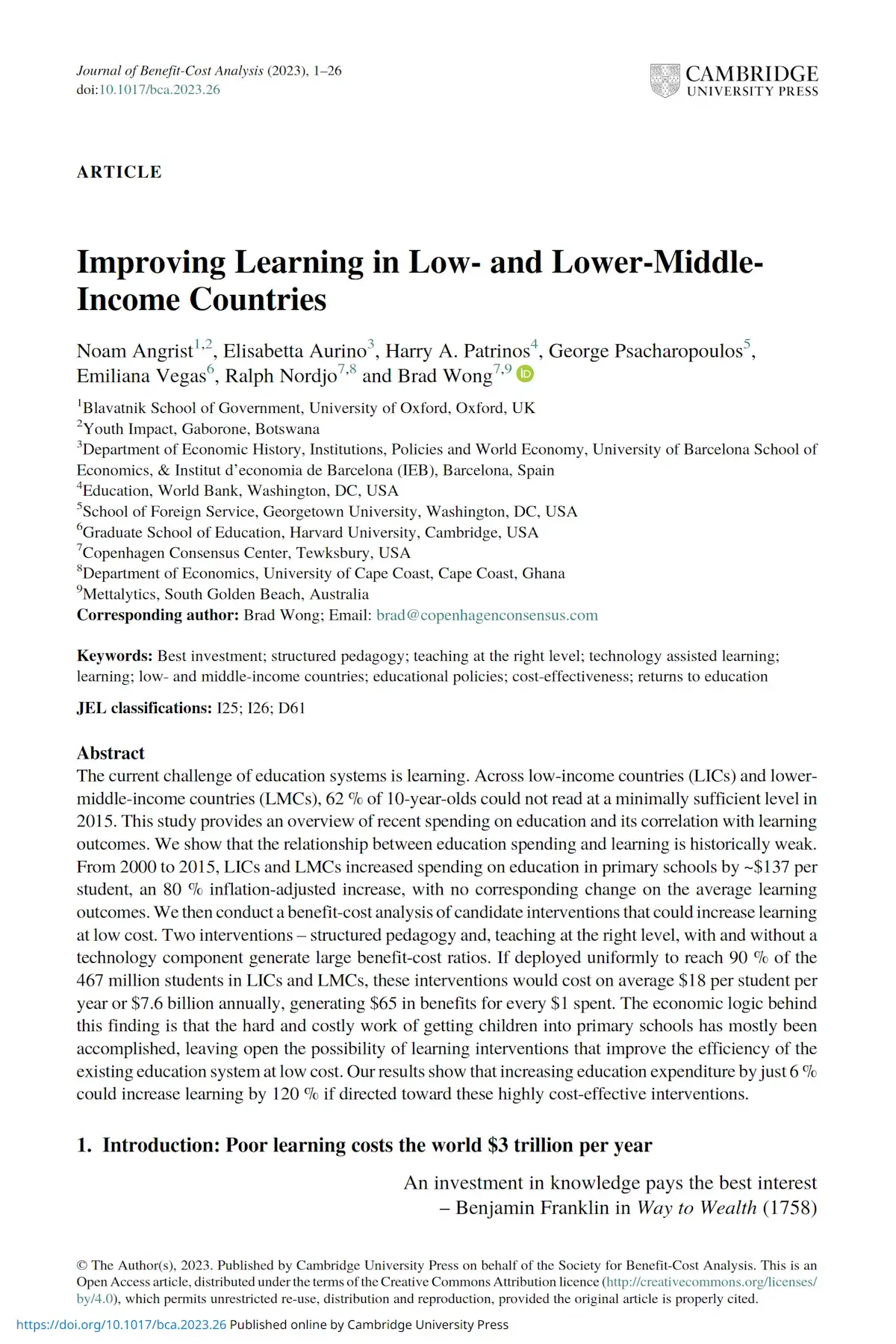Halftime for SDGs: Education
Best Investment Paper
The current challenge of education systems is learning. Across low-income countries (LIC) and lower-middle-income countries (LMC), 62% of 10-year-olds could not read at a minimally sufficient level in 2015. This study provides an overview of recent spending on education and its correlation with learning outcomes. We show that the relationship between education spending and learning is historically weak. From 2000-2015, LICs and LMCs increased spending on education in primary schools by ~$137 per student, an 80% inflation adjusted increase, with no impact on the average learning outcomes. We then conduct a benefit-cost analysis of candidate interventions that could increase learning at low cost. Two interventions – structured pedagogy and, teaching at the right level, with and without a technology component generate large benefit-cost ratios. If deployed uniformly to reach 90% of the 467 million students in LICs and LMCs, these interventions would cost on average $18 per student per year or $7.6 billion annually, generating $65 in benefits for every $1 spent. The economic logic behind this finding is that the hard and costly work of getting children into primary schools has mostly been done, leaving open the possibility of learning interventions that improve the efficiency of the existing education system at low cost. Our results show that increasing education expenditure by just 6% could increase learning by 120%, if directed towards these highly cost-effective interventions.
The final peer-reviewed published article can be found here:


